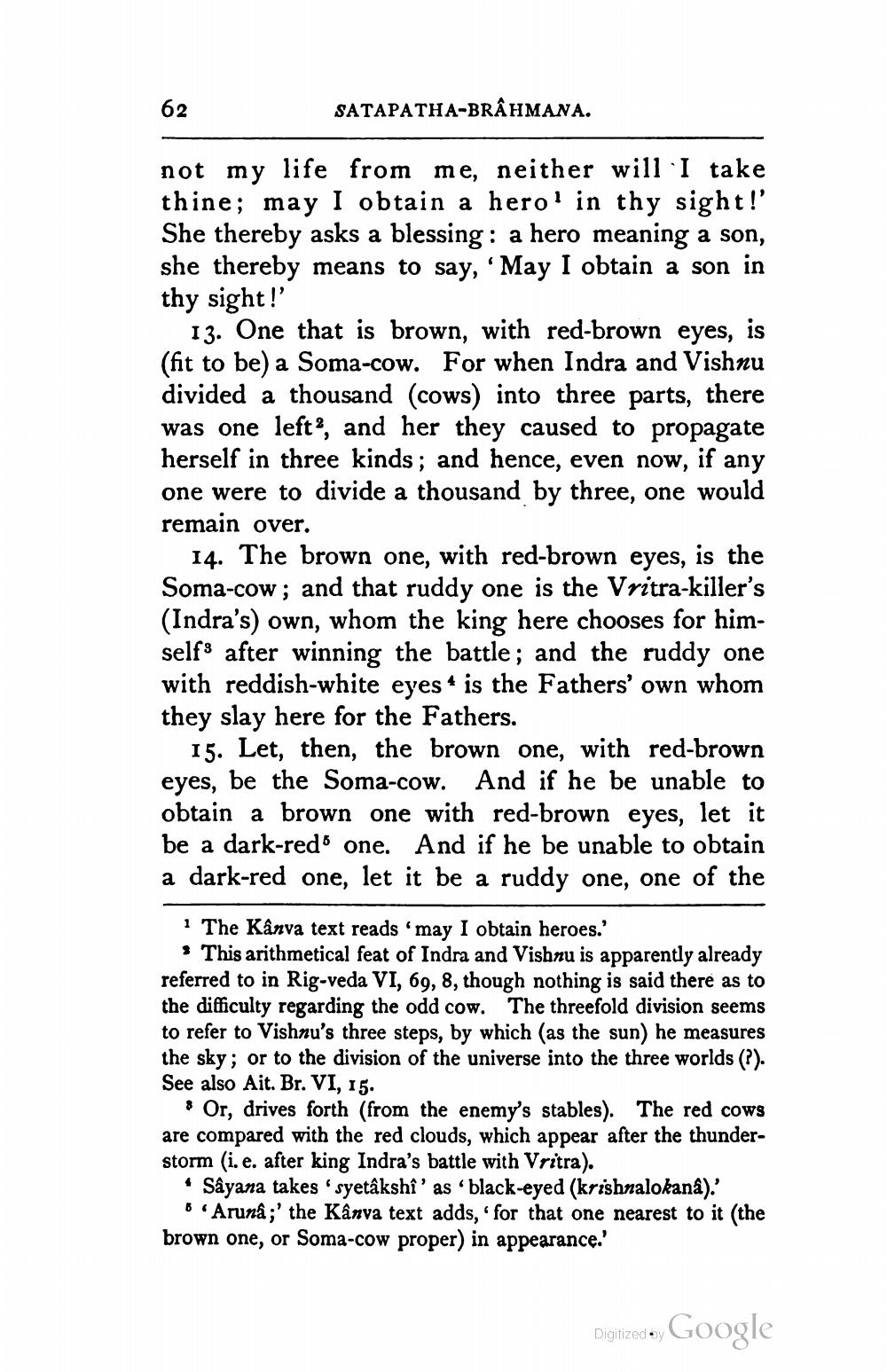________________
SATAPATHA-BRAHMANA.
not my life from me, neither will I take thine; may I obtain a hero' in thy sight!' She thereby asks a blessing: a hero meaning a son, she thereby means to say, 'May I obtain a son in thy sight!'
13. One that is brown, with red-brown eyes, is (fit to be) a Soma-cow. For when Indra and Vishnu divided a thousand (cows) into three parts, there was one left, and her they caused to propagate herself in three kinds; and hence, even now, if any one were to divide a thousand by three, one would remain over.
62
14. The brown one, with red-brown eyes, is the Soma-cow; and that ruddy one is the Vritra-killer's (Indra's) own, whom the king here chooses for himself after winning the battle; and the ruddy one with reddish-white eyes is the Fathers' own whom they slay here for the Fathers.
15. Let, then, the brown one, with red-brown eyes, be the Soma-cow. And if he be unable to obtain a brown one with red-brown eyes, let it be a dark-red one. And if he be unable to obtain a dark-red one, let it be a ruddy one, one of the
1 The Kânva text reads 'may I obtain heroes.'
This arithmetical feat of Indra and Vishnu is apparently already referred to in Rig-veda VI, 69, 8, though nothing is said there as to the difficulty regarding the odd cow. The threefold division seems to refer to Vishnu's three steps, by which (as the sun) he measures the sky; or to the division of the universe into the three worlds (?). See also Ait. Br. VI, 15.
Or, drives forth (from the enemy's stables). The red cows are compared with the red clouds, which appear after the thunderstorm (i. e. after king Indra's battle with Vritra).
Sâyana takes 'syetâkshî' as 'black-eyed (krishnalokanâ).' Arunâ;' the Kânva text adds, ' for that one nearest to it (the brown one, or Soma-cow proper) in appearance.'
Digitized by
Google




